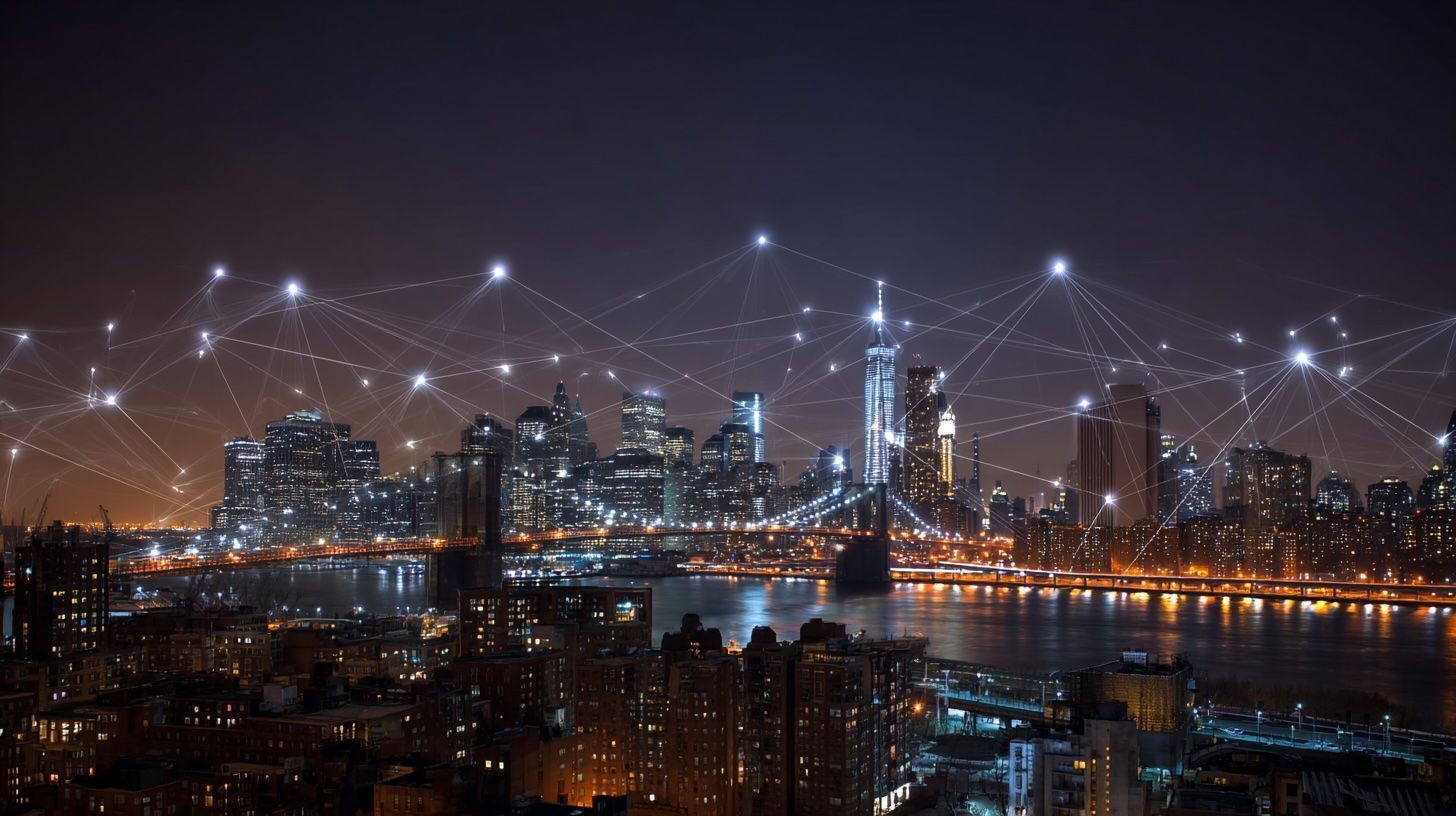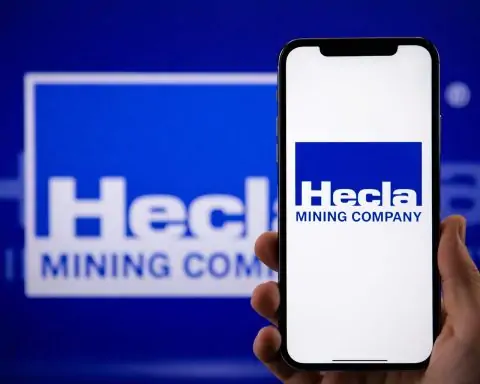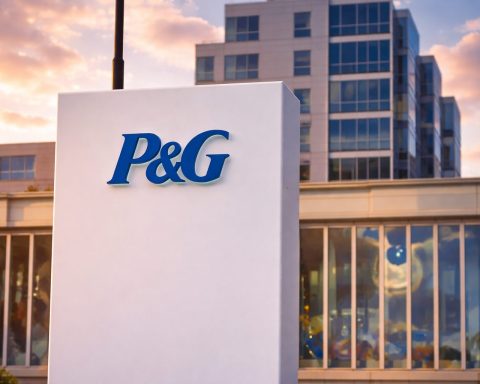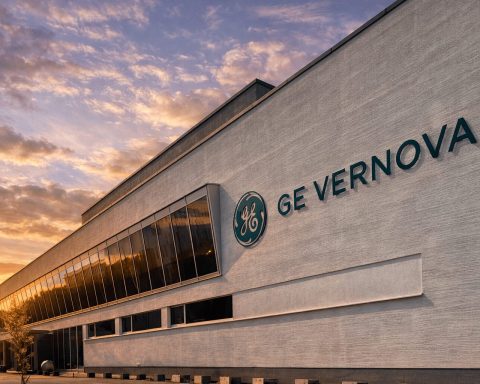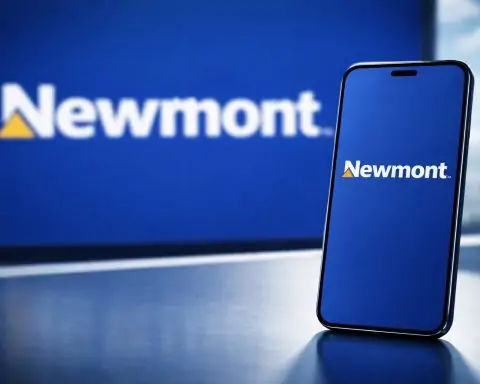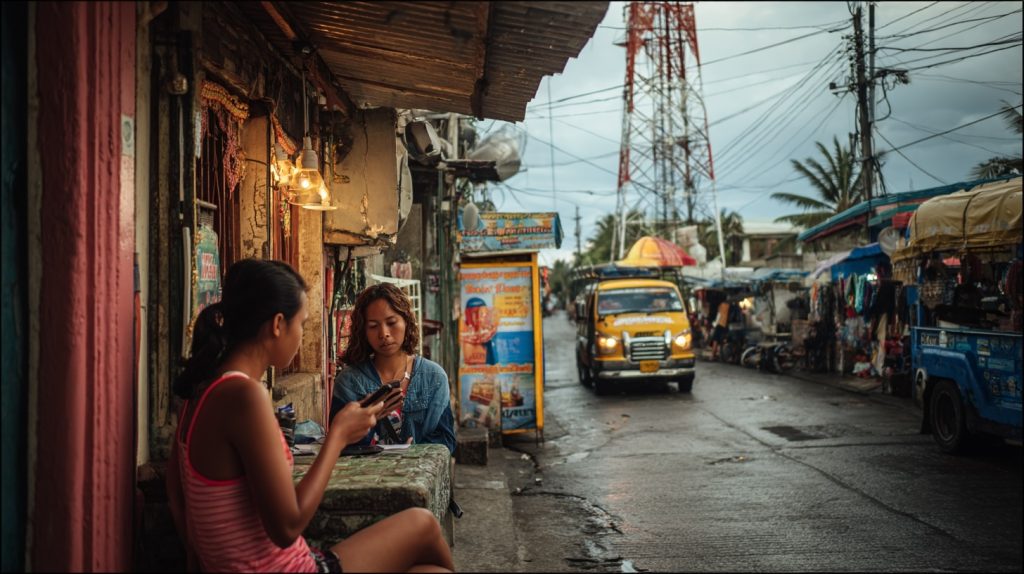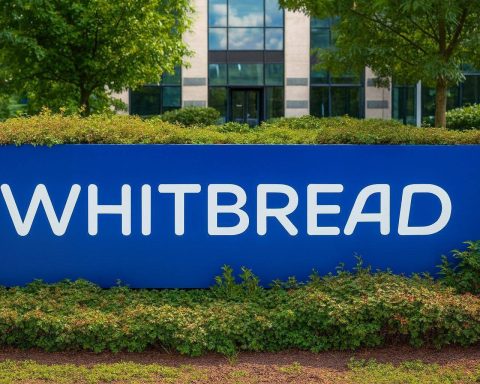- LinkNYC has deployed over 2,200 kiosks across all five boroughs, delivering free gigabit Wi-Fi, USB charging ports, and maps on built-in tablets.
- LinkNYC kiosks require no password to connect and broadcast free Wi-Fi to anyone nearby.
- All NYC subway stations now offer free Wi-Fi on the TransitWirelessWiFi network, though signal may drop in tunnels.
- JFK, LaGuardia (LGA), and Newark (EWR) airports provide free unlimited Wi-Fi for passengers, with networks such as JFK-Free-WiFi or _Free LGA WiFi.
- Free Wi-Fi is available in major parks such as Central Park, Bryant Park, Washington Square Park, and the High Line, often via LinkNYC or sponsor networks.
- New York Public Library branches offer free Wi-Fi that does not require a library card.
- Most NYC hotels provide free basic Wi-Fi, with higher-tier options sometimes charged, and loyalty programs can yield upgraded speeds.
- T-Mobile’s Tourist Plan is about $30 for 5 GB of data plus unlimited texts and 1,000 minutes for 3 weeks, with other options including $50 for 30 days unlimited and $40 for 10 GB.
- Verizon prepaid plans in NYC generally cost more, with a $35 activation fee and options like 15 GB for about $45 or Unlimited data for about $60 per 30 days, plus eSIM support.
- Travel eSIMs and MVNOs offer cheaper options, with USA data-only eSIMs from Airalo, Holafly, GigSky, and Nomad (around 10 GB for under $25) and Mint Mobile’s multi-month bundles (e.g., 3 months of unlimited data for $90).
New York City might be the city that never sleeps, but you also don’t want to be the tourist that never connects. Whether you need GPS directions in Midtown or to upload a selfie from Central Park, having reliable internet is essential. This comprehensive guide will show you how to get online in NYC easily – from free Wi-Fi hotspots all over town to short-term SIM cards and eSIMs that dodge outrageous roaming fees. We’ll also cover what to expect at hotels, how to stay secure on public networks, and some city-backed programs (like LinkNYC kiosks) offering free connectivity to everyone. Let’s dive in!
Free Public Wi-Fi in NYC’s Parks, Streets & Subways
You’re never far from free Wi-Fi in New York City. Here are the top places tourists can get online without spending a cent:
- Parks and Public Spaces: Major parks like Central Park, Bryant Park, Washington Square Park, and even elevated promenades like the High Line are digitally friendly. Thanks to initiatives like LinkNYC (the city’s free Wi-Fi kiosk network), these areas offer free high-speed Wi-Fi to visitors [1]. In many parks, you can literally sit on a bench under a tree and check your email or social media. Some parks have Wi-Fi provided by sponsors (e.g. AT&T in certain NYC parks), but in most cases just look for the park’s Wi-Fi or a LinkNYC signal.
- LinkNYC Kiosks on Streets: The city has deployed over 2,200 LinkNYC kiosks across the five boroughs [2]. These slim, modern kiosks (often replacing old phone booths) broadcast super-fast free Wi-Fifor anyone nearby. You’ll spot them on many busy sidewalks – they also have charging ports and tablets for maps. Just join the “LinkNYC” network for free internet; no password required. With thousands of these, you’re likely to find free Wi-Fi while walking through commercial areas and even residential neighborhoods. (The LinkNYC network is touted as one of the largest free public Wi-Fi networks in the world.)
- Subway Stations: Descending into the subway used to mean losing all connectivity – not anymore! All underground subway stations in NYC now offer free Wi-Fi (look for the “TransitWirelessWiFi” network) and cellular coverage is expanding as well [3]. You can check emails or route maps while waiting on the platform. Keep in mind the Wi-Fi is station-based; you might lose signal in the tunnels between stations (though plans are underway to extend coverage through the entire subway system). Still, as of now you can expect to get online at stations in Manhattan and most of the system, which is a huge help for navigating the city.
- Airports: Good news for travelers arriving at JFK, LaGuardia (LGA), or Newark (EWR) – all NYC-area airports provide free unlimited Wi-Fi to passengers. This is a recent upgrade from the old 30-minute limit. For example, JFK Airport now offers free unlimited high-speed Wi-Fi in all terminals [4]. Just connect to the airport’s official “_Free WiFi” network (e.g. “JFK-Free-WiFi” or “_Free LGA WiFi”) and you’re online. This is great for letting family know you landed or streaming some entertainment during a layover. (Tip: If an airport Wi-Fi network asks you to pay after a time limit, double-check you have the official free network – the Port Authority upgraded to unlimited free sessions [5], so no payment should be needed.)
- Cafés, Libraries, and Other Spots: Countless coffee shops, restaurants, and stores in NYC offer free Wi-Fi to customers. Big chains like Starbucks, Dunkin’, and McDonald’s always have free Wi-Fi if you need to pop in. Many independent cafés (Think Coffee, Joe Coffee, etc.) also provide Wi-Fi – just buy a coffee and ask for the password if needed. NYC’s many public libraries are another haven for free internet: any branch of the New York Public Library (NYPL) has free Wi-Fi you can use, no library card needed [6]. You’ll also find free connectivity in places like Times Square (which has its own public Wi-Fi network) and even at some museums or tourist centers. When in doubt, look for a “Free WiFi” sign or use your phone’s Wi-Fi search – you’ll be surprised how many open networks pop up in Manhattan!
Pro tip: The City of New York actually maintains an online map of free Wi-Fi hotspot locations [7]. You can search the NYC.gov site for “NYC Wi-Fi Hotspots” to find parks, public buildings, and plazas with city-provided Wi-Fi. This can be handy if you want to plan your day around connectivity.
Getting a Local SIM Card or eSIM (Major Carriers)
If you need internet beyond the reach of Wi-Fi hotspots, consider getting a local prepaid SIM card or eSIM. Using a U.S. SIM will give you data anywhere you go (via cellular networks) and help you avoid expensive roaming fees from your home carrier. Here’s a look at the major carriers in the US (Verizon, AT&T, T-Mobile) and what they offer for short-term visitors:
- T-Mobile – Best Value for Tourists: T-Mobile is often the top pick for international visitors in NYC. They have a huge 5G network and straightforward prepaid plans. In fact, T-Mobile specifically markets a tourist-friendly plan: for about $30 you get 5 GB of high-speed data (plus unlimited texts and 1,000 minutes of domestic calls) valid for 3 weeks [8] [9]. This T-Mobile Tourist Plan is great for short trips – it’s affordable and requires no ID or contract. For heavier data needs or longer stays, T-Mobile’s standard prepaid plans are still a good deal: $50 (plus tax) buys 30 days of unlimited data on their network [10] [11]. They also offer a 10 GB plan for $40, and an “Unlimited Plus” with extra high-speed hotspot data for ~$60 [12]. All T-Mobile prepaid options include unlimited calling/texting in the US and 5G access. You can purchase a T-Mobile SIM at any of their stores (there are many in NYC). eSIM: If your phone is eSIM-capable, you can skip the physical SIM – T-Mobile lets you activate a prepaid eSIM via their app or in-store, often with no paperwork. (Note: T-Mobile’s prepaid SIM activation fee (normally $10) is often waived if you buy a plan in-store [13], but double-check and ask.)
- AT&T – Reliable Network, But Pricier: AT&T also offers prepaid SIMs, but their short-term plans tend to be more expensive or restrictive. As of 2025, AT&T’s tourist prepaid options included an “Unlimited” plan for $65(full speed data) and a cheaper $50 plan that actually caps your data speed to 3 Mbps (a very slow “unlimited”) [14] [15]. In fact, without enrolling in autopay (which tourists typically won’t do), that $50 plan effectively costs $65 for one month [16]. In short, AT&T makes you pay more for true high-speed data, and their advertised prices may assume multi-month payments or autopay discounts. The upside is AT&T’s network has excellent coverage and they do offer 5G on prepaid, but given the higher price and complexity, most visitors skip AT&T unless they specifically need its coverage. (AT&T also supports eSIM on prepaid, but like T-Mobile they may charge ~$5 extra for an eSIM activation [17].)
- Verizon – Strong Coverage, Highest Cost: Verizon is known for the widest coverage in the US (good for road trips or rural areas), but for an NYC tourist staying in urban areas, any carrier will have good service. Verizon’s prepaid SIM deals are generally the most expensive. They require a hefty $35 activation fee in-store (often waived only if you pick an unlimited plan) [18]. Verizon’s prepaid plans (30-day) for a single line currently include: 15 GB for ~$45, or Unlimited data for ~$60 (with a 5 GB mobile hotspot allowance; a higher-tier unlimited with 25 GB hotspot is ~$70) [19]. These prices might exclude taxes and assume autopay discounts, so the actual one-time cost to a tourist could be a bit more. Verizon does support eSIM activation as well, but given the high startup cost, Verizon is usually not the first choice for short visits. Unless you absolutely require Verizon’s coverage, you can save money with T-Mobile or an MVNO.
Tip: All the main carriers have stores around NYC (use Google Maps to find the nearest T-Mobile, AT&T, or Verizonstore). Staff can set up your prepaid plan on the spot, usually within minutes [20]. Bring your passport if you have it, though most carriers do not require ID for prepaid. Also, ensure your phone is unlocked for use with a U.S. SIM – check with your home provider before traveling [21].
Budget Alternatives: MVNOs and Travel eSIMs
Beyond the big networks, there are plenty of smaller providers and innovative options that can get you connected in NYC, often at bargain prices. These include MVNOs (mobile virtual network operators that rent network space from the big carriers) and dedicated travel eSIM providers:
- Popular MVNOs (Mint Mobile, Ultra Mobile, H2O, Lycamobile, etc.): MVNOs offer prepaid SIMs (and sometimes eSIMs) with competitive pricing, but they are often sold online or at specific retailers rather than official stores. For example, Mint Mobile (on T-Mobile’s network) has very cheap plans – as low as ~$15 per month – but they require purchasing a 3-month bundle upfront for new customers [22] [23]. If you happen to be staying in the US for a few months (or will make repeat visits), Mint’s 3-month plans (e.g. 5 GB/month for $45 total, or even unlimited data for $90 total) are a great deal. However, for a one-week vacation, Mint isn’t as convenient due to the multi-month structure. Ultra Mobile is another option that caters to tourists – they have a 21-day “Tourist” SIM for $30 (runs on T-Mobile’s network) similar to the T-Mobile Tourist Plan, and Ultra Mobile includes features like international calling credit (useful if you need to call overseas) [24] [25]. Lycamobile and H2O Wireless SIMs can sometimes be found in convenience stores or vending machines in NYC. They offer prepaid plans like Seven-day or 30-day packages. For instance, Lycamobile might charge around $30 for 7 GB or similar deals [26], which isn’t particularly cheap. The key benefit of MVNO SIMs is you can buy them ahead of time: some companies will ship a SIM to your home before your trip, or provide a QR code for eSIM activation, so you’re all set the moment you land.
- Travel eSIM Providers: If your phone supports eSIM, you have the option to purchase a data-only travel eSIMonline in minutes – no physical SIM needed. Providers like Airalo, Holafly, GigSky, Nomad, and others sell U.S. data packages that you activate via a QR code. For example, you can get a USA eSIM with ~10 GB of data for under $25 from certain providers [27] [28]. Setup is done before or when you arrive: you buy online, receive a QR code, scan it on your phone, and it loads a secondary cellular plan just for data. This is extremely convenient for short stays – you don’t even need to swap out your regular SIM. Just note: these travel eSIM plans typically do not include local calling or SMS (data only), but you can use WhatsApp, Skype, or other apps for communication. Also, not all travel eSIMs allow access to 5G networks; some limit you to 4G/LTE speeds. (As of 2025, Airalo’s eSIM in the U.S. does support 5G on partner networks [29].) If high-speed is critical, check the provider’s details. Travel eSIMs are a favorite for many tourists now, since you can set it up instantly and avoid hunting for a SIM card upon arrival.
- Plan Ahead for Physical SIMs: If you prefer a physical SIM but want to save money, one trick is to order a SIM card online before your trip. Many MVNOs (like US Mobile, Mint, etc.) will ship a SIM to you internationally or to a U.S. address. US Mobile, for example, offers a very affordable plan – about $12.50 for 30 GB of high-speed data (plus unlimited slower data after) for one month [30] – but you’d need to obtain their SIM ahead of time (they sometimes even offer the first SIM for free or <$1). If you have a friend or hotel address in the U.S., you could mail it there. This requires a bit of planning but can drastically cut costs. Keep in mind, without an eSIM or pre-ordered SIM, finding a tourist SIM at the airport on arrival is surprisingly hard in the U.S. (Most U.S. airports, including JFK, don’t have plentiful SIM vending machines or shops [31]). You might see SIM vending kiosks in some terminals, but the prices tend to be very high (e.g. $80+ for a modest plan) [32]. It’s usually better to either pre-buy a SIM/eSIM or wait until you reach the city and visit a carrier store or electronics retailer.
Best Internet Options by Stay Duration & Needs
Not all tourists have the same itinerary, so here are tailored recommendations depending on how long you’ll be in NYC and what you plan to do online:
- Short Trips (Up to 1 Week): If you’re only in New York for a few days, you might manage mostly with free Wi-Fi and minimal cellular data. For navigation and messaging on the go, consider a travel eSIM with a small data pack (e.g. 1–3 GB) which can cost as little as $5–$15. That way you have data if you need it, but you’re not paying for a full month. The T-Mobile Tourist Plan (5 GB for $30) is also a solid choice for up to 3 weeks, even if your stay is shorter – it’s easy and relatively cheap [33]. If you don’t want to bother with any local SIM at all, make sure to download offline maps (e.g. Google Maps offline for NYC) over Wi-Fi and take advantage of the city’s ubiquitous free hotspots. You can also use your hotel’s Wi-Fi to load up information for the day.
- One to Two Weeks: For a trip around 7–14 days, getting a local SIM or eSIM is highly recommended so you have hassle-free connectivity. The amount of data depends on your usage: if you’ll be sharing photos, using ride-share apps, and Googling a lot, you might burn through ~5–10 GB in two weeks. An option here is to buy a prepaid SIM from T-Mobile ($40 for 10 GB or $50 unlimited for the month) [34] – even though it’s a 30-day plan, it’s still often cheaper than what your home carrier would charge for 2 weeks of roaming. Alternatively, a mid-sized travel eSIM (~5–10 GB for ~$20) could cover two weeks easily. Balance the convenience of having unlimited data (T-Mobile’s $50 plan lets you not worry at all) versus the cost savings of a capped plan (if you know you won’t stream videos on mobile data, 5 or 10 GB may be plenty).
- A Month or More: For stays of several weeks up to a couple of months, a local carrier’s monthly prepaid plan is usually the way to go. T-Mobile’s $50 unlimited plan is the best value for heavy usage [35] – you get the full month of unlimited 5G data, and you can renew for another month if you stay longer. If you need hotspot for your laptop, consider the $60 plan which includes 10 GB of high-speed tethering [36]. Those who need top-notch coverage (e.g. living in different areas or doing road trips beyond NYC) might opt for Verizon’s $60 unlimited; it’s pricey, but Verizon’s network might serve you better on cross-country travels. Also, if you’re staying 3+ months, you could test an MVNO multi-month deal like Mint Mobile’s 3-month pack (unlimited data for $90) [37] – it requires paying upfront, but after 3 months you could reassess or switch. Always ensure your plan won’t auto-renew beyond your stay; most prepaid plans simply expire unless you top-up, which is ideal for visitors.
- Light vs. Heavy Data Users: If you’re a light data user (mainly messaging, emails, maps), you can save money with a smaller data plan. Even a 3–5 GB plan might suffice for a couple of weeks if you use Wi-Fi when possible. For instance, 5 GB for ~$30 (via a tourist SIM or eSIM) could be enough. On the other hand, heavy data users – those who love Instagram, video calls, or need to work remotely – should lean toward unlimited data options. The last thing you want is to run out of data halfway through your trip and have to hunt for refill vouchers. Unlimited plans from carriers (T-Mobile or AT&T) cost $50–$65 for the month, but they offer peace of mind [38] [39]. Another strategy for heavy users is to combine approaches: use an unlimited plan on one device and perhaps carry a portable Wi-Fi hotspot (or use your phone’s hotspot) for all your other devices if traveling with a group. If your hotel Wi-Fi is slow, having that unlimited mobile data will be a lifesaver.
Internet Access at Hotels, Hostels & Airbnbs
Fortunately, most accommodations in NYC have you covered when it comes to basic Wi-Fi:
- Hotels: Almost all hotels in New York City provide some form of internet access for guests, usually Wi-Fi. In mid-range and budget hotels, Wi-Fi is typically free and included with your stay – you’ll get a login password at check-in, or it’s an open network for guests [40]. Higher-end hotels sometimes charge for premium Wi-Fi (or include it in a “facility fee”), but free basic Wi-Fi is standard in 2025. Be aware that in some hotels the free tier might be slower, suitable for browsing and emails, while streaming HD video might require a paid upgrade. If you’re unsure, ask the front desk about the Wi-Fi speed and any costs. Pro tip: join the hotel’s loyalty program (often free) – many brands like Marriott or Hilton give members complimentary upgraded Wi-Fi.
- Hostels and Budget Stays: NYC hostels and guesthouses almost always offer free Wi-Fi as well, usually in common areas and often in rooms too. The speed can vary (hostel Wi-Fi can get sluggish if many backpackers are on Netflix at night), but it should be fine for basic needs. Don’t hesitate to ask staff if there are better spots to get a strong signal (e.g. the lobby might have a better router than the 5th-floor dorms).
- Airbnb & Vacation Rentals: Airbnb apartments in New York are required to list if they have internet, and nearly every legitimate rental will advertise “Wi-Fi included” – it’s an expectation nowadays. When booking an Airbnb, check the amenities section for Wi-Fi. If you plan to work or have important video calls, you might even message the host to confirm the connection speed or reliability (some hosts will mention “high-speed internet” in the listing). Generally, you can count on Airbnb Wi-Fi being available, but quality could depend on the building’s service. As a backup, it’s good to have a mobile data plan in case the home Wi-Fi goes down.
One thing to remember: The Wi-Fi at hotels or Airbnbs is only as secure as any other public network. Even though it’s semi-private, you should still use caution (more on Wi-Fi security below). Also, if your hotel charges for Wi-Fi and you don’t want to pay, you can often use cell data tethering from a local SIM or step out to a café with free Wi-Fi.
Tips to Avoid Roaming Charges & Data Overages
International roaming fees can be brutally expensive, so it’s wise to avoid using your home SIM for data in NYC (unless you have a special plan). Here are some tips to dodge those charges and stay within data limits:
- Keep Roaming Off until you’re sure of the costs. The moment you land, make sure data roaming on your phone is disabled (in your cellular settings). This prevents any background apps from gobbling data on your home SIM. Some phones pop up a warning about roaming charges – heed it. Only turn on roaming if you explicitly know your plan’s rates or have purchased a roaming package.
- Consider Roaming Passes from Home: If you don’t want the hassle of a new SIM, check if your carrier offers a traveler’s roaming plan. For example, some European carriers have affordable North America passes, or worldwide daily plans (like $10/day for unlimited use). These can be convenient for short trips – though $10/day becomes $140 for two weeks, which often is pricier than a local SIM. Weigh the cost, and also confirm that the pass truly covers high-speed data in the US (some “roam like home” plans may throttle speed or limit data).
- Leverage Wi-Fi whenever possible: This sounds obvious, but truly make it a habit. Before leaving your hotel each day, download any Google Maps areas, transit schedules, or Yelp reviews you might need while out. When you’re at a café or museum with Wi-Fi, use that time to upload photos or download large files (podcasts, videos, etc.). The more you do on Wi-Fi, the less mobile data you burn through. New York has so many hotspots that you could even get by with almost no cell data (some frugal travelers do this, hopping between Starbucks and LinkNYC signals [41] [42]). Even if you have a local data plan, saving that data for truly necessary moments (like hailing an Uber on a street corner) will ensure you don’t run out.
- Monitor your data usage: It’s easy to lose track of data use when you’re out all day taking photos, using maps, and Instagramming. Use your phone’s built-in data tracker or the carrier’s app to keep an eye on your consumption, especially if you have a limited plan. You can set data alerts on most smartphones (e.g. get a warning at 80% of your allotment). If you see you’re running through data too fast, adjust by increasing Wi-Fi use or consider adding an extra data package. It’s better to proactively buy an extra 1 GB from a provider than to let your plan exhaust and possibly auto-charge you overage fees.
- Use offline and data-saving features: Download offline maps, save articles for offline reading, and set apps like Netflix or Spotify to offline mode for your trip. Enable data-saver modes in apps and your browser (many mobile browsers have a data-saver that compresses images). Also disable auto-playing videos in social apps – those can eat data quickly. Little tweaks like these help stretch a small data plan across your whole vacation.
Staying Safe on Public Wi-Fi
Free Wi-Fi is fantastic for your wallet, but it can come with security risks. Public networks are accessible to everyone – including malicious actors – so take precautions to keep your personal information safe:
- Beware of Fake Hotspots: Stick to known network names. For instance, if you see a network called
"Free_CentralPark_WiFi", it might be legit or it might be a rogue hotspot set up by a hacker [43]. When in Central Park, you’d expect an official network like “_FreeParkWiFi” or a LinkNYC kiosk signal – if something looks off (typos, unusual name), avoid it. Criminals sometimes create impostor networks (e.g. “JFK_FreeWifi”) to lure users. When you connect, they can intercept your data. Always double-check the Wi-Fi network name with signages or ask a staff (in a cafe or airport) for the official network name. - Use a VPN for sensitive tasks: A VPN (Virtual Private Network) app on your phone or laptop encrypts your internet traffic. This is highly recommended if you plan to do anything sensitive on public Wi-Fi, like banking or logging into work email. A VPN makes it much harder for anyone on the same network to snoop on you [44]. There are many VPN services (some free, many paid). Even if you don’t use it all the time, turning on a VPN while on open Wi-Fi (like that airport or subway hotspot) when you need to enter passwords or view personal info is a smart move.
- Avoid entering passwords or personal info on open networks: If you’re not using a VPN, try to limit activities to browsing and basic use on public Wi-Fi. It’s fine for looking up museum hours or reading news, but maybe wait until you’re on a secure connection (like back at your hotel or on mobile data) to log in to your bank or make an online purchase. Public Wi-Fi networks with no password encryption can potentially be spied on. In worst-case scenarios, hackers can perform “man-in-the-middle” attacks to intercept data as you transmit it [45]. As a rule of thumb, anything involving finances or sensitive data should be done on a trusted network.
- Turn off auto-connect and sharing: Most phones have a setting to automatically connect to known Wi-Fi networks – consider turning this off for public networks. You want to manually choose when to join “NYC Free Wi-Fi” so that your device doesn’t accidentally latch onto a sketchy network with the same name. Additionally, ensure your file sharing or AirDrop is set to contacts-only or off when on public Wi-Fi. You don’t want strangers popping into your device. It’s also a good practice to “forget” the network after you’re done using a public hotspot [46], so your device doesn’t auto-connect next time without you realizing.
- Keep your device updated and use HTTPS: Make sure you have the latest security updates on your phone and that any firewall is on. When browsing, notice the URLs – most sites use HTTPS (lock icon in address bar) nowadays, which encrypts the content you send/receive on that site. If a site is HTTP (no lock icon), avoid entering any info on it while on public Wi-Fi (or maybe avoid it altogether). Stick to reputable sites and apps. For extra security, you can also use your smartphone’s personal hotspot (from your cellular data) for your laptop if you need to do something ultra-sensitive; that way you’re not on the cafe’s network at all.
In summary, enjoy the free Wi-Fi but treat it as a convenience, not a completely secure channel. With basic precautions like a VPN and smart browsing habits, you can greatly mitigate the risks and use those NYC hotspots safely.
NYC’s Connectivity Programs (LinkNYC and Beyond)
New York City has invested in infrastructure to keep people connected, and as a tourist you can benefit from these initiatives:
- LinkNYC: As mentioned earlier, LinkNYC is a city program that converted old payphones into sleek Wi-Fi kiosks. Each LinkNYC kiosk provides free gigabit Wi-Fi, free nationwide calling, USB charging ports, and a tablet for maps and city info [47]. There are kiosks all over Manhattan and parts of other boroughs – over 2,200 in total – so this network alone can often keep you online while you wander the streets [48]. You don’t need any registration to use LinkNYC Wi-Fi; just connect and accept the terms. The signal range is around 150 feet from the kiosk. Pro tip: You’ll often find LinkNYC units at bus stops and busy corners, so if you need quick internet, step near one of those kiosks. They’re easy to spot with their tall, slim design and digital advertising screens.
- Free Wi-Fi in Parks & Public Facilities: The city, often in partnership with sponsors, offers free Wi-Fi in many parks and public spaces. For example, many NYC Parks have at least one free Wi-Fi hotspot (some provided by AT&T or other telecoms) [49] [50]. The city’s 311 website lists which parks have free or limited-free (e.g. 30 minutes free) Wi-Fi. Public libraries double as city-provided connectivity hubs – beyond Wi-Fi at branches, the NYPL even has a program lending out portable hotspot devices to residents (though that’s typically for locals with library cards, not tourists). Still, as a visitor you can freely use library Wi-Fi during open hours. Also, check if any special tourist centers or buses offer Wi-Fi; certain tour buses advertise onboard Wi-Fi (useful, but remember security if you use it).
- Affordable Connectivity for Residents: While not directly for tourists, it’s interesting to know NYC has programs like Big Apple Connect providing free or low-cost home broadband to public housing residents [51]. And the federal Affordable Connectivity Program (ACP) helped many get subsidized internet until funding issues arose [52]. These won’t impact a short-term visitor, but it shows the city’s commitment to expanding internet access. The takeaway for tourists is that NYC’s widespread connectivity is part of a broader effort – you’ll notice digital kiosks, public computer centers, and other tech-friendly amenities as you explore.
- Emergencies and Backup: If you ever find yourself without cell service, remember that any smartphone can dial 911 without a local SIM. Additionally, LinkNYC kiosks allow free calls to 911 and 311 (city information line) on their built-in tablet or keypad. In a pinch, you could use one to contact help. Many subway stations have Help Point intercoms too. It’s not directly about internet, but it’s good to know you’re never truly “disconnected” from help in NYC.
By tapping into these city resources, you can minimize your paid data usage. The combination of LinkNYC and free park Wi-Fi means you might go large stretches without needing mobile data at all. It’s a tech-savvy city, so take advantage of these free connectivity options provided for public use.
Bottom Line: Visiting New York no longer means you have to rack up roaming charges or wander the streets offline. With free Wi-Fi available in parks, plazas, subways, and via LinkNYC kiosks, you’re covered in many public areas [53] [54]. For continuous coverage, a local prepaid SIM or eSIM (especially the tourist-friendly deals from T-Mobile or various MVNOs) will keep your smartphone online everywhere else at a reasonable cost. Most hotels and Airbnbs offer free Wi-Fi, so your evenings are covered too [55]. Just be smart about security on public networks [56] [57] – a few precautions go a long way. With this guide, you can confidently navigate the Big Apple fully connected, sharing your adventures in real time without fear of a shocking phone bill. Enjoy NYC and stay connected!
Sources: Relevant information has been compiled from travel experts and official resources, including recent tourist guides and NYC government releases, to ensure up-to-date advice on New York City internet access [58] [59] [60]. Safe travels and happy surfing!
References
1. www.wanderlustingk.com, 2. www.amny.com, 3. www.wanderlustingk.com, 4. www.sleepinginairports.net, 5. www.panynj.gov, 6. www.wanderlustingk.com, 7. www.rsinc.com, 8. www.mightytravels.com, 9. www.mightytravels.com, 10. www.traveltomtom.net, 11. www.traveltomtom.net, 12. www.traveltomtom.net, 13. www.traveltomtom.net, 14. www.traveltomtom.net, 15. www.traveltomtom.net, 16. www.traveltomtom.net, 17. www.traveltomtom.net, 18. www.traveltomtom.net, 19. www.traveltomtom.net, 20. www.traveltomtom.net, 21. www.traveltomtom.net, 22. www.mightytravels.com, 23. www.mightytravels.com, 24. www.mightytravels.com, 25. www.mightytravels.com, 26. www.traveltomtom.net, 27. www.traveltomtom.net, 28. www.traveltomtom.net, 29. www.traveltomtom.net, 30. www.reddit.com, 31. www.traveltomtom.net, 32. www.traveltomtom.net, 33. www.mightytravels.com, 34. www.traveltomtom.net, 35. www.traveltomtom.net, 36. www.traveltomtom.net, 37. www.mightytravels.com, 38. www.traveltomtom.net, 39. www.traveltomtom.net, 40. www.wanderlustingk.com, 41. www.reddit.com, 42. www.6sqft.com, 43. www.wanderlustingk.com, 44. www.wanderlustingk.com, 45. www.wanderlustingk.com, 46. www.wanderlustingk.com, 47. www.intersection.com, 48. www.amny.com, 49. www.rsinc.com, 50. www.rsinc.com, 51. www.amny.com, 52. www.amny.com, 53. www.wanderlustingk.com, 54. www.wanderlustingk.com, 55. www.wanderlustingk.com, 56. www.wanderlustingk.com, 57. www.wanderlustingk.com, 58. www.wanderlustingk.com, 59. www.traveltomtom.net, 60. www.sleepinginairports.net
